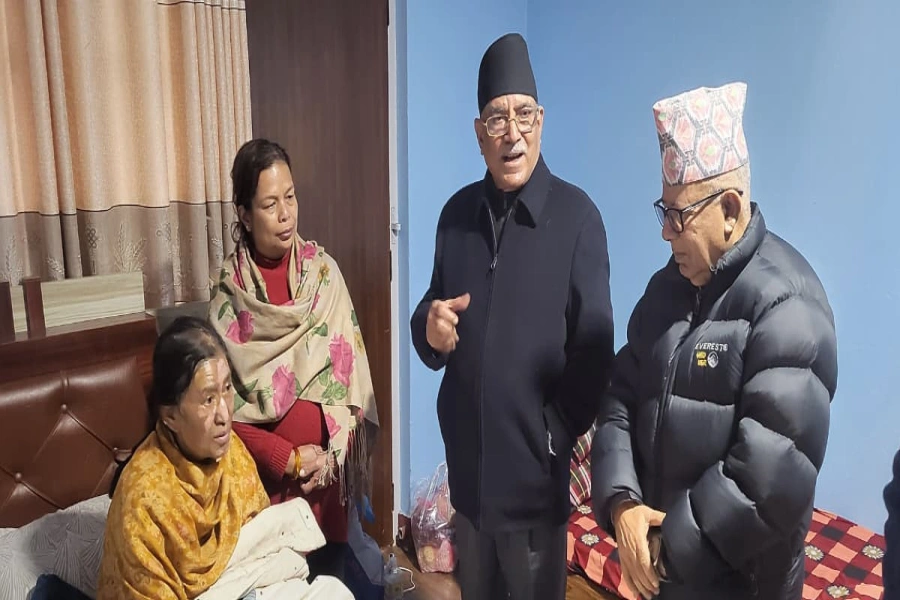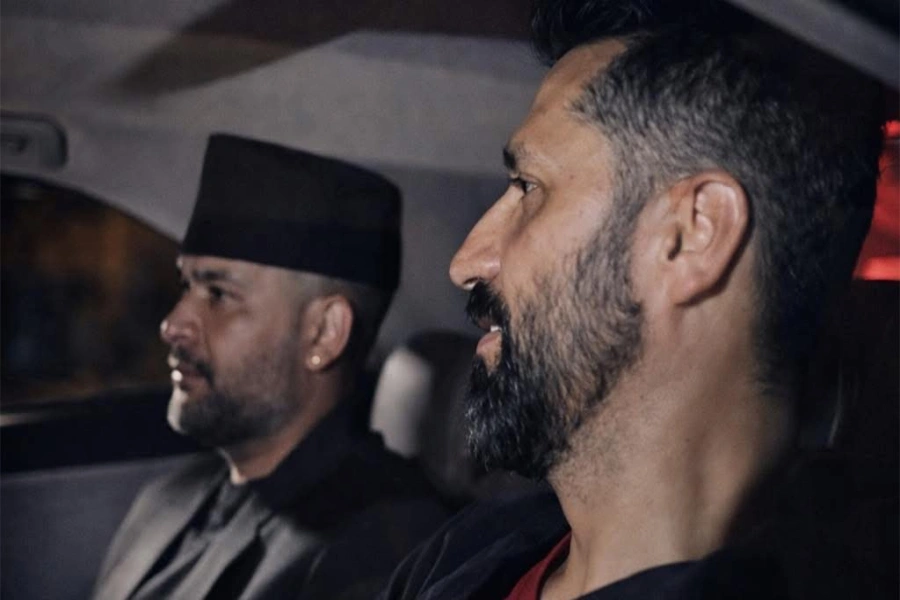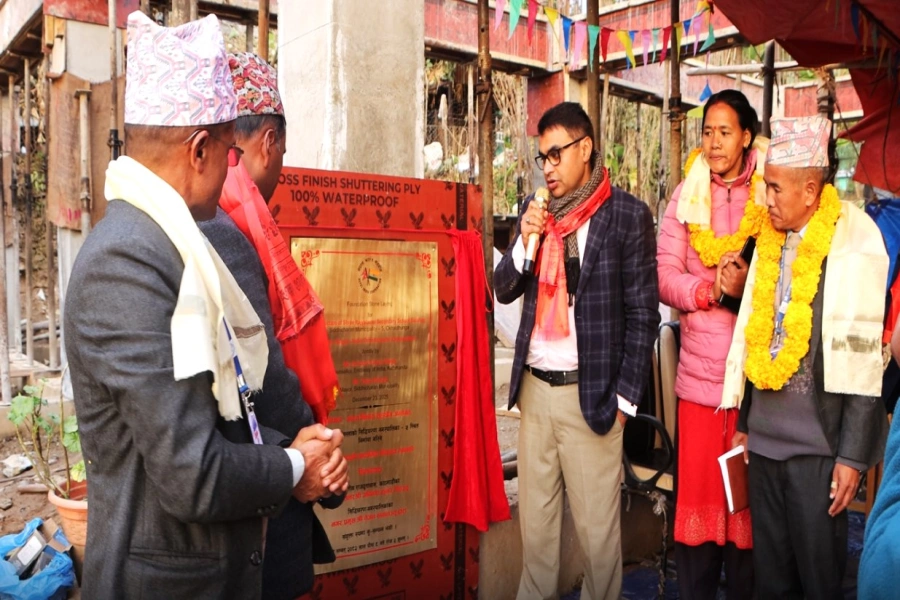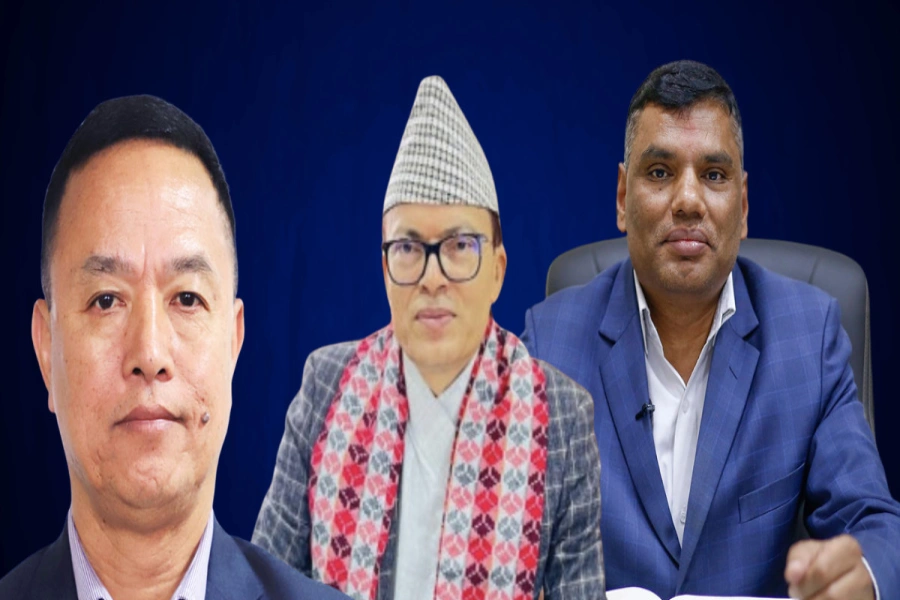The use of Dhaka in clothes – be it kurtis, saris, or even gowns – has become really popular in the recent times. With a lot of people finally waking up to see and appreciate the beauty of these handmade fabrics, Dhaka has become a staple when it comes to Nepali fashion, be it traditional or modern wear. According to Bini Bajracharya, design and production manager at Sabah Nepal – a fashion house specializing in Dhaka, Dhaka was modernized around 2011 and the main credit goes to a fashion show titled “Ananta” which introduced Dhaka in a new, more modern light. Since then, thanks to a number of celebrities and pageant winners who embraced Dhaka dresses, coats and gowns, the fabric was seen as something that could be chic and fun to wear while paying an ode of sorts to one’s culture. However, Mukta Shrestha, designer and owner of Muku, feels that since Dhaka is an expensive fabric it’s better to use it in moderation to make the final product cost effective. Here, Bajracharya and Shrestha give us a few tips on how you can incorporate Dhaka in your wardrobe.
Give your dress another dimension
Dhaka, though considered a traditional cloth, looks really good when made into dresses. As Dhaka fabrics are usually heavily patterned and with a lot of colors, Bajracharya suggests it is best to balance it out by adding a plainer dimension to it. For example, if you have a bright colored Dhaka, something on a plainer side like black or blue fabric to go with it would be perfect to achieve overall balance. The combination would make for a chic evening dress.
Blending of material is key when it comes to pulling off a Dhaka dress. Similarly, the proportion of Dhaka and non-Dhaka fabric can make or break a dress. An almost diagonal cut of Dhaka with the plainer cloth is what is popular among dress wearers these days, but one can be experimental when it comes to designing their dresses. Find a fabric you love and tone down the brightness with a neutral shade and you can experiment to your heart’s content. It’s best to steer away from bright shades of plain cloth to go with your Dhaka fabric as that takes away the spotlight from the Dhaka.
Rock a chic coat
Coats can be extremely fashionable and can help you make a fashion statement. Be it a short formal coat or a long coat, these garments are good in any occasion and are a must have for a complete wardrobe. According to Bajracharya, coats can be tricky to get right so it might be a good idea to customize it in order to get a perfect design and fit.
The right way to go about it, Bajracharya says, is for you to come up with an idea in mind, relay that well to the designers and carefully select the patterns and designs in order to make a coat that you will love and wear for years to come. “People tend to hurry and not tell designers that they don’t like a particular design and, when it’s made, they rarely wear it,” she says adding that as Dhaka tends to be a bit expensive, people should be careful when designing a garment with it. “It’s an investment and should be made wisely,” she adds.
Styling tricks to make a small living room seem bigger

Accessorize
The use of Dhaka should not be just limited to dresses and clothes. They can also be used to accessorize your look. Dhaka can be used in purses, bags as well as clutches. These purses will look extremely well balanced with a simple plain ensemble and will add an extra bit of oomph to your outfit. Dhaka bags also have a special charm to them, making the most mundane outfits pop. Dhaka bags and purses go well in all occasions and with all kinds of outfits and look both sophisticated and cool.
Muku produces Dhaka shawls and clutches that sell very well. Shawls are very versatile and can be used with both traditional and modern wear like kurtis, saris, and gowns. Dhaka clutches, on the other hand, can be paired with a plain dress. Shrestha believes this looks classy and elegant.
Gowns and glory
Dhaka gowns are a staple in beauty pageants like the coveted Miss Nepal, thanks to their authenticity and uniqueness. Bajracharya emphasizes on the fact that rocking a gown is all about balance. For example, if the blouse part of the gown is plain red silk then the Dhaka skirt can be cut symmetrically to give a classy look, making it an ideal party wear. Moreover, you can also experiment with colors, using the combination of bright and shiny or plain and patterned. “As long as there is a good blending and a well scattered balance, a gown with Dhaka fabric can never go wrong,” she reveals.
Experiment
In the end, Dhaka is just a fabric and so it can be used in anything and everything you want to use it for. Be it shoes, a cool t-shirt or even earnings, it all depends on you to decide where you see Dhaka working. You can deviate from how Dhaka is being styled nowadays and try something totally different as long as you are confident you can carry it off. There is a lot of potential in Dhaka and it is up to you to decide how to make the best of it.
Photos : Bijay Rai
Model : Nima Adhikari
Designer : Mukta Shrestha/MUKU






































